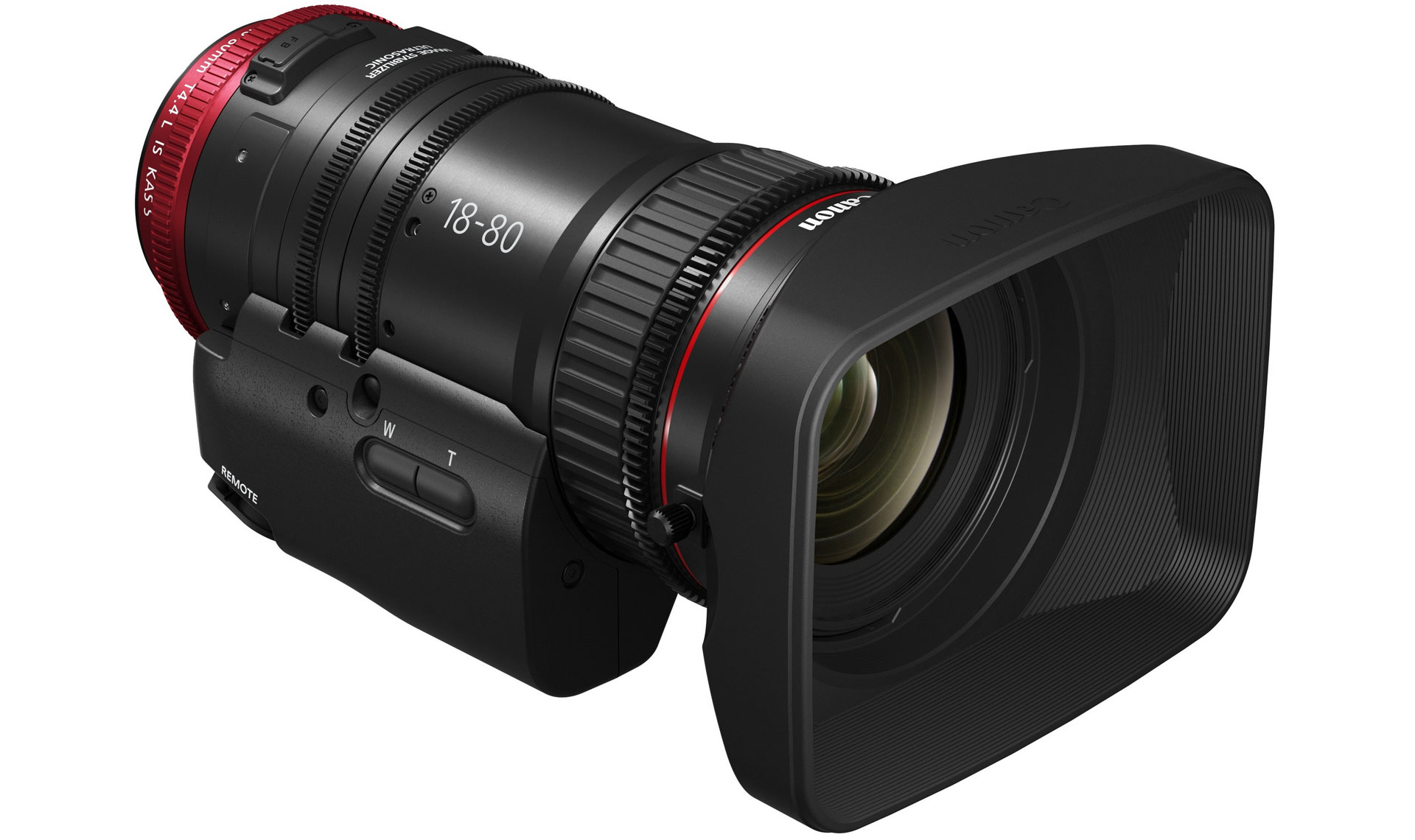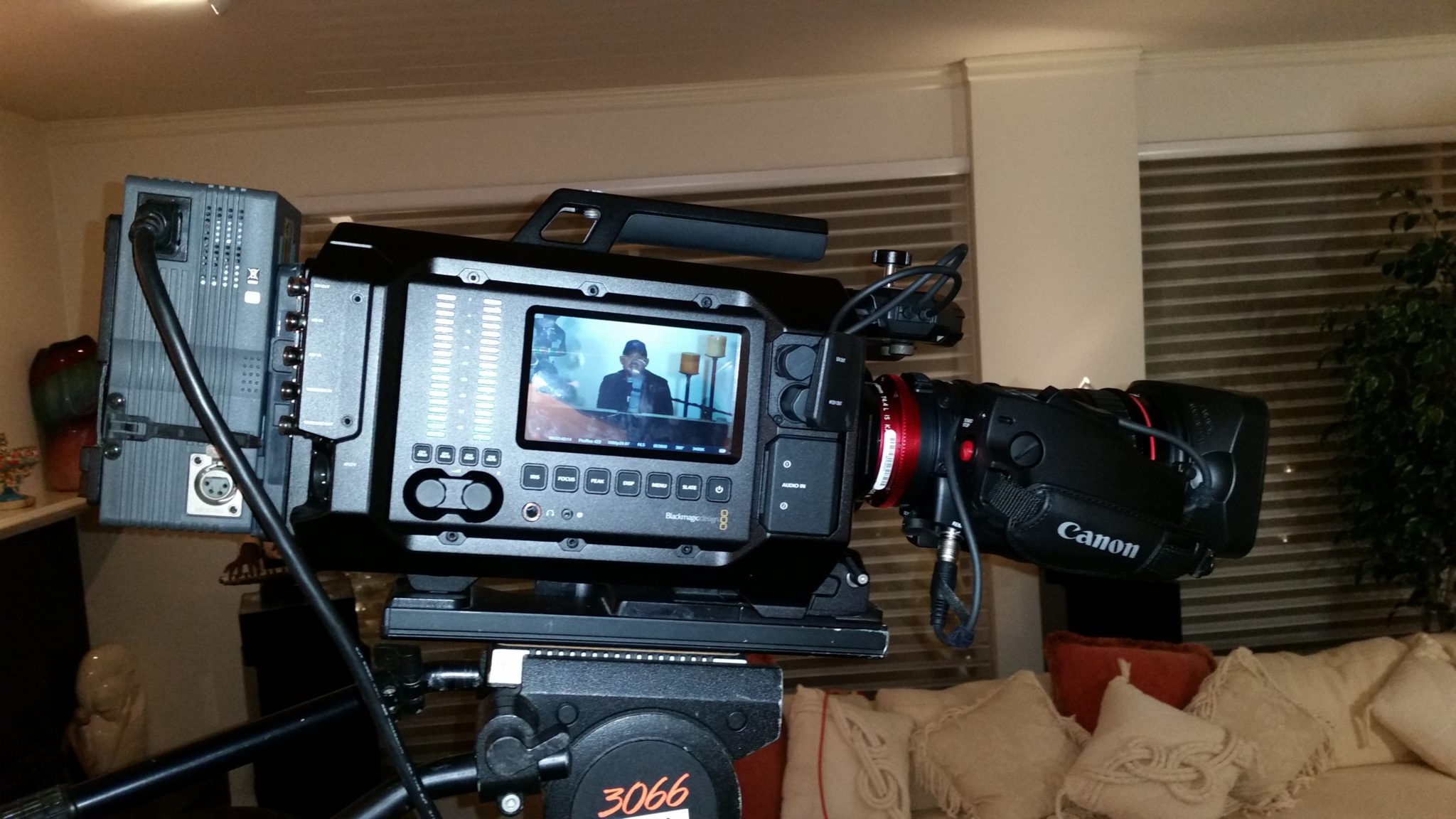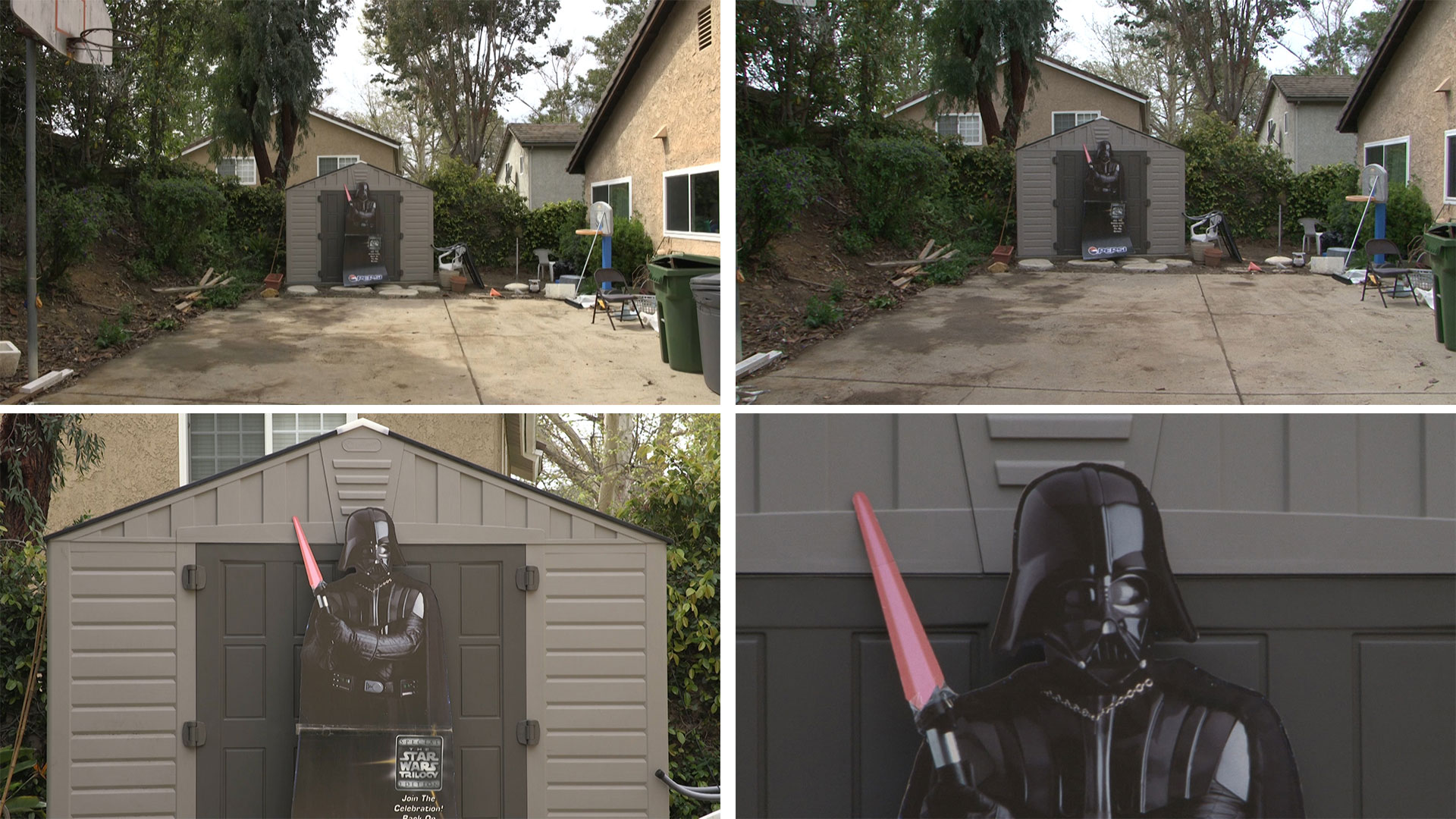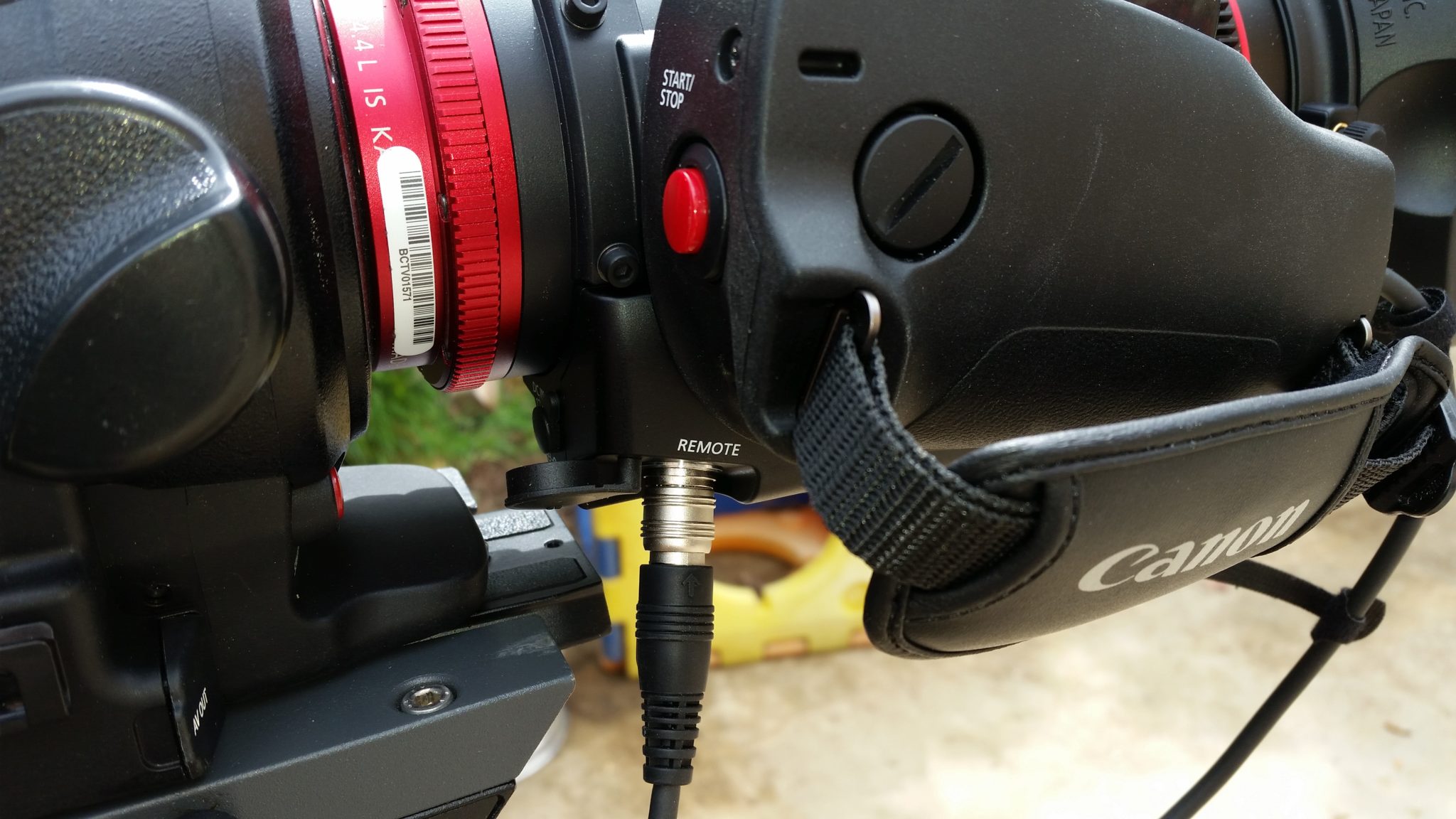A couple years ago I reviewed Blackmagic Design’s Ursa digital cinema camera. One of the reasons people were so excited about it was that it was the first of the new breed of inexpensive digital cinema cameras that looked like a camera, not a metal block or a wheel chock with a lens. It looked like you could throw an ENG lens on it and go shoot. Unfortunately, ENG lenses aren’t made for Super 35 sensors, and none have an EF mount. Trying to run-and-gun with the Ursa using Canon’s popular EF24–105mm DSLR lens, which I got with the Canon 6D, was just awkward — there was no good way to balance the camera with your right hand without purchasing a cinema grip or such. You also had no good way to do a smooth zoom and focus at the same time. Because of this, I really was limited in what I could do with the Ursa for the majority of my clients, and it was relegated to storage.
The Budget Alternative
Last year at NAB, Canon addressed the needs of people who wanted a more ENG/video production style lens by introducing a gorgeous 17–120mm (7×1) EF/PL-mount cinema servo zoom lens. The downside was the cost; at $33,000, it was more than many small and mid-size companies spend on equipment in a year. To throw a bone to camerapeople who want to own a servo zoom but couldn’t afford their 7×1, the “budget” Canon Compact-Servo 18-80mm zoom lens was introduced at $5,600 late last year. I got to play with it for about two weeks and did one real shoot with it.
Mostly, I used it with the aforementioned Blackmagic Ursa. The lens comes in two parts: the actual lens, and the hand grip you must screw on to it. That was fairly simple, as was mounting it on the camera. What was a little confusing was a cable hanging off the hand grip. On all other cameras I owned, that cable would have plugged into the camera for power and communications. There was no such plug on the Ursa, so I thought I was screwed. After a bit of research, I found that the cable plugged into a port on the bottom of the lens. From there, it got power and communication with the camera.
The only issue was the record button. All the stats showed up on the Ursa’s viewfinder and LCDs, but I needed to hit one of the camera’s record buttons because the record button on the lens didn’t work. This is not bad if you are on a tripod, but if the camera is on your shoulder, it is very awkward. Unsurprisingly, the same record button worked as expected when used with Canon’s EOS C100 Mark II.
Then I got to try the servo zoom. Smooth. Silky smooth. It reacted very sensitively to the amount of pressure put on the zoom rocker. Any DP who wants to do a subtle zoom should be happy with this lens. The focus ring is also very smooth and easy to use when doing handheld shots. The lens does have an optical image stabilizer with two modes, depending on what you are doing with the camera. It also has autofocus, but it wasn’t compatible with the Ursa. The autofocus was compatible with an EOS C100 Mark II, but I didn’t get to test it much further.
On the Job
For my test shoot, I mated the Canon lens and the Ursa viewfinder to the Ursa. The shoot was for my friend Brad Schachter (NefeshMusic.com), who wanted to do a demo video showing his musical talent for potential wedding, bar-mitzvah and corporate clients. (If his name sounds familiar, he was a child actor and played Little Buddy in Halloween III: Season of the Witch.)
We shot several angles for each song set, moving the Ursa around the room, at 1080p30. (I didn’t shoot 4K since we didn’t have a lot of time to keep dumping the CFast cards after every couple of takes.) We also used a GoPro Hero4 Black shooting 4K 30p so I could reframe the image in post. With the Canon and Ursa combo, I was able to adjust my framing on the fly using the smooth servo, and I was very impressed with the footage. The ability to do some smooth zooms on the fly without a focus puller saved a lot of time.
Is there anything not to like about this beautiful lens? Well, it depends on what you want to use it for and what you are used to. If you are generally shooting wide-angle scripted material and just need to push in a little here and there for dramatic effect, you should be fine. If you film nature, shooting animals in their natural habitat from a distance, this is not the lens for you. If you do live audiovisual work, running a live feed from a camera in the back of a banquet hall to projectors, this is definitely not the right lens to use. In those latter cases, you need more focal length than this lens can provide.
To give you an idea of the Canon 18–80mm focal range, I enlisted the services of Darth Vader. (He faked his own death in Return of the Jedi and has since lived in a shed in my back yard, where he uses his Jedi powers to trim the trees and keep away raccoons.) I set up my tripod about 30 feet from Lord Vader and tried out the Canon EOS C100 Mark II with the Compact Servo 18-80mm (4.4×1) zoom lens versus my trusty Sony HVR-Z7u with its 32–384mm (12×1) zoom. The tripod stayed stationary.
If you compare the two wide-angle shots you will see that the Canon is a tiny bit wider than the Sony. Comparing the two maximum telephoto shots, you can see that the Sony is the clear winner if you need to shoot from a long distance. The best the Canon can do is not even what I’d consider a medium shot. The extended Sony zoom can fill the frame with only Vader’s head and shoulders.
The lens also has a maximum aperture of f4 that it can hold throughout the zoom range. F4 is not exactly a low-light lens. This can be a problem, depending on the camera you have it mated to. The Blackmagic Design Ursa has a maximum ISO of 800, and many users of that camera don’t recommend going over ISO 400. That means using this lens on the Ursa will require some lighting when shooting indoors at night. The Canon EOS C100 Mk II has a maximum ISO of 102,400 (although you probably don’t want to go to even one-quarter of this), so you can shoot in much lower light.
I found that where the cable from the hand grip goes into the lens, it protruded so much I couldn’t mount the C100 Mark II/18–80mm lens combo to my Manfrotto 504HD tripod head, as it was hitting the top. I got it to work by mounting the quick-release plate in such a way that I couldn’t use the little pop-up button that connects to most cameras to keep it straight on the plate. Not ideal, but OK for testing purposes. Just keep in mind that certain cameras may not fit on your current tripod when combined with this lens.
Lenses and Their Limitations
To best describe this lens I need to refer to a documentary I saw about the battle for the Golan Heights during the Arab-Israeli Six-Day War in 1967. It explained how the Israelis beat the entrenched Syrian Army troops, who were constantly shelling Israeli communities in the Golan Heights. The answer was the Uzi, Israel’s iconic short and stubby 9mm submachinegun. Because of the Uzi’s compact size, the Israeli Army could quickly run around in the narrow trenches and overwhelm the Syrian soldiers. The Syrians were armed with larger, more powerful AK-47s, but they had trouble maneuvering them around narrow trenches, sometimes getting the barrels wedged in the trench walls.
This shows that, sometimes, the less powerful tool is the one to use. If you are doing close-quarters shooting, this lens may be your Uzi. If you need a sniper rifle, you will have to look elsewhere.
I and many others come from a more ENG/event/corporate background, where our cameras had optional kit lenses available at purchase. Once we put a lens on the camera, we never took it off — one lens was used for everything. I loved the original Fujinon 14:1 lens that came with my Panasonic “Supercam” in 1995 so much that when I upgraded to the AG-DVC200 in 2001, I ordered it without a lens, and just moved the lens from one camera to the other. Those coming from a more cinematic background are more used to using a few different lenses in a day.
So I recommend this lens highly for some shooters, but not for others. The lens is well built, the servo is super smooth, and it feels like a precision instrument. Just be aware that if you need a telephoto focal length, this is the wrong lens for you. As Dirty Harry once said, “A man’s got to know his limitations.” The same goes for lenses. But if you are looking for a digital cinema servo lens under $30,000, this is currently your only choice — and, despite some limitations, it performs remarkably well.














I saw a proto version of this some months back. Upon putting the lens into shoulder mode, that is, using the servo handstrap, I immediately said to the vendor “This Lemo plug on the bottom of the grip is gonna get broken for sure. (From the heel of your hand pushing against it while in the strap.) I’d REALLY SUGGEST that the designers move it prior to production.” From the photo it’s hard to say if it was moved rearwards on the grip to fix. Cautionary note.